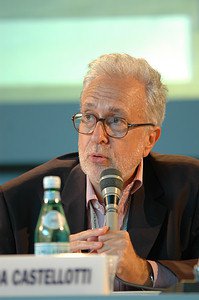“Non sembiava imagine che tace [He did not seem a silent image]”. The Art of Reality in the Age of Dante
In the first “Cornice” of the Purgatory, Dante encounters a series of images carved in marble by the hand of God. Their most striking feature is that they are so realistic to seem alive. At the beginning of the fourteenth century, Dante shows that he is aware of the fundamental renewal in the European art that took place between the end of the thirteenth century and the beginning of the following one. At the heart of such revolution was the rediscovery of naturalism, which fulfilled the desire to represent man, the living beings, and the things as they appear in their individual aspect. The beginnings and the first great episodes of this story are due to the sculptors of the Gothic cathedrals in France and Germany. Also Italy gave an important contribution with Nicola Pisano and his son Giovanni, and Arnolfo di Cambio. Then, on the threshold of the fourteenth century, Giotto made of painting the art par excellence, being able to depict the existence of man in the world, within a reality that everyone can see with their own eyes.
But what is the meaning of this great renewal in Western art? The new naturalism of Gothic art corresponded to a wider and more radical movement that concerned the whole European civilization. This was the age of the Italian city-states, the age when the university was born, as well as the mendicant orders of St. Francis and St. Dominic, St. Thomas and St. Bonaventure; it was an age marked by the overcoming of the distrust towards the material reality that had characterized the earlier centuries, at the end of the ancient world. A principle flourishes according to which it is possible to love the whole reality understood as the place where it is possible to know the truth. St. Thomas, following Aristotle’s philosophy, had said: “There is nothing in the intellect that was not previously in the senses.”
Thus, the rediscovery of the individual and unique value of the physical reality became an exciting challenge for the artists, who were called to shake up and renew the entire tradition of medieval art.
The exhibition will be a journey through the art of reality at the time of Dante, chosen as an exceptional witness to this turning point. From the raw realism of the Inferno to Giotto’s angel-clouds, from the strong expressivity of Giovanni Pisano’s statues to the sweet colors of the Majesties: everything wants to visibly exalt the beauty of the Christian event, as a set of facts that are recognizable in reality, present to us today as then.
By Giovanni Assorati, Nicola Borghesi, Gianluca del Monaco, Stefano Doati, Elena Marchetti, Filippo Piazza, Laura Staccoli.
General coordination by Marco Bona Castellotti.





